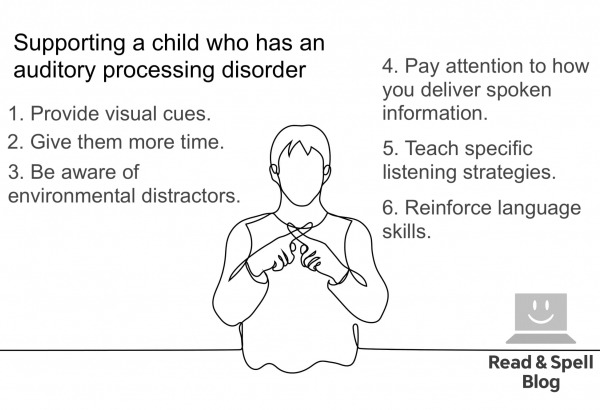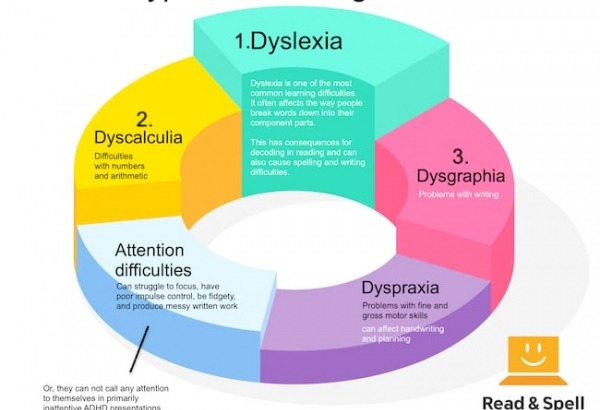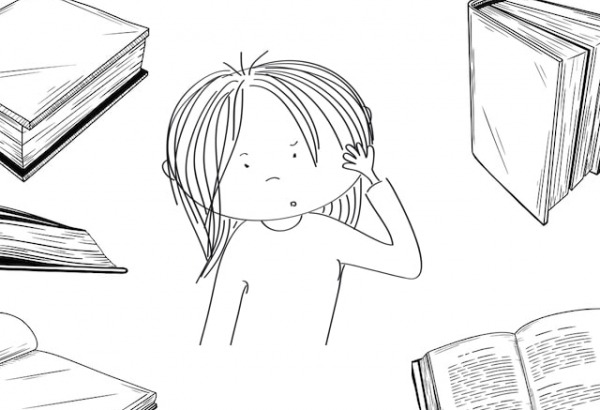How to help a child with dyspraxia

Teaching a child with dyspraxia can be a frustrating experience due to the wide range of symptoms they may present. However, while dyspraxia is a neurological condition that commonly causes movement and coordination issues, it does not affect intelligence. Children with dyspraxia are perfectly capable of learning alongside their peers, they may just need some extra attention and support from time to time.
Awareness is the first step and can make all of the difference in helping a child to reach his or her full potential at school.
While not as well known as other learning difficulties, dyspraxia in children is relatively common, with 6-10% of the population affected, to some degree. A child with dyspraxia may experience a number of different problems at school, including finding difficulty in handwriting written work, experiencing problems with moving a mouse, navigating a keyboard or manipulating a touch-screen, and struggling to perform some of the movements required for physical education, music, and art classes. Beyond performing tasks that require fine and gross motor skills, there may also be challenges with the planning and organizational aspects of schoolwork.
Nonetheless, parents and teachers can help students with learning difficulties by recognizing the root cause of a child’s performance issues and providing appropriate support, to make it easier for the dyspraxic child to be and feel successful in the classroom. Sometimes a solution as simple as touch-typing vs. handwriting or making an audio recording instead of written notes can make all the difference in encouraging a child who is struggling. There's no reason why a child with dyspraxia should not develop strong literacy skills from an early age if he or she has the right accommodations.
What is dyspraxia?
Also known as developmental coordination disorder, dyspraxia results when a child’s brain is unable to effectively coordinate physical movements with the body’s muscles. Although the cause of dyspraxia is still unknown, it is thought to be genetic and is more commonly observed in boys than girls. Some researchers also cite a tendency for dyslexia and dyspraxia to present together.
There are four common types of dyspraxia. Oromotor can cause a child to have difficulty annunciating words, constructional dyspraxia is more to do with spatial relationships, ideational impacts the ability to perform coordinated movements in a sequence and ideomotor dyspraxia poses a problem for single-step tasks.
The result is a host of symptoms that range from balance and posture issues to problems with using writing tools, and even slurred speech. Dyspraxia not only affects physical abilities but can also cause poor planning and organization skills and generally make it seem like an individual is clumsy, which can lead to feelings of embarrassment and affect self-confidence.
Although early symptoms may be observed in toddlers, a diagnosis is not usually made until children reach the age of 5 and their coordination difficulties are shown to be unrelated to muscle strength and not the result of other neurological conditions.
Dyspraxia at home
Dyspraxia is not something a child will grow out of, but occupational, motor and speech therapy can make a difference. In addition, simply listening to your child and helping him or her process emotions experienced over the course of the day can be helpful.
As dyspraxic individuals often struggle with sequence organization, you can help young children to improve narrative skills by talking about their day and breaking actions down into individual steps. Rehearse the order in which everyday routines, such as getting dressed and having breakfast, occur.
You might also model planning skills by keeping a family calendar, making lists on blackboards and providing other tools to support your child, such as clearly labeled folders and containers for storing toys and school assignments.
Problems at school
A child can be highly intelligent and creative but still present with classroom learning issues that hinder his or her ability to keep up with peers. Identifying learning difficulties is often the first hurdle because when it goes undiagnosed, dyspraxia can wreak havoc on a child’s self-esteem and emotional well-being.
In the past, teachers were more likely to mistake symptoms of dyspraxia for acting out and label children as lazy and disruptive. Worse still, they might not have challenged the child academically. Yet as no two individuals with dyspraxia have the same set of symptoms or are affected to the same degree, it can still be hard for some students with dyspraxia to get the right diagnosis. This is particularly the case for those who are excessively fidgety, have trouble sitting up straight at their desks and/or tend to lose their homework and confuse deadlines and task specifications.

How teachers can help
Because dyspraxia often affects writing, reading and spelling abilities, a child with dyspraxia may require more time to process new tasks. They might also experience more success when they over-learn material through repetition and a graded step-by-step approach.
Just being aware of a student’s individuals learning needs can make a difference. Teachers who are sensitive to dyspraxia are less apt to criticize and reprimand classic dyspraxic behavior and more able to support a child by adapting classroom activities and teaching study strategies.
Help students with organization and planning by giving structured assignments with clear directions and remember to provide plenty of feedback and praise when it's due, to keep motivation high.
Here are a few more tips to try:
-
Pay attention to writing utensils and paper. Students with dyspraxia may find it easier to write using wide-stemmed pencils and pens, or by applying rubber grips to their writing utensils. Be aware that ballpoint pens can sometimes release an excessive amount of ink depending on how they are manipulated, so stick with felt-tip pens and keep plenty of erasers handy. You can also help a child with writing by providing graph paper to guide them in letter placement and spacing. Colorful, lined paper for students who tend to write using larger letters is also a plus.
-
Consider alternatives to activities requiring handwriting. Writing things out by hand can be very frustrating for the dyspraxic (and dyslexic) child and can cause them to struggle to keep up and follow your lesson. Set children up with note-taking buddies, allow them to use computers or provide electronic copies of material in advance to reduce note-taking strain. You may also want to provide fill in the blank or matching exercises that test comprehension without requiring lengthy written responses.
-
Teach dyspraxic children touch-typing. While handwriting is often a struggle, touch-typing is much easier for dyspraxic children and can help facilitate writing and composition skills by removing the physical tax associated with producing text. The earlier students learn, the sooner they can begin to type homework assignments and even use a computer in class to take electronic notes.
-
Adjust seating plans. It’s often beneficial to place students with dyspraxia at the front of the room so they have an easier view of the board. They may also find it easier to concentrate when distanced from doors, windows, bulletins and other classroom distractions. This is an important consideration for teaching students with visual impairments as well.
-
Provide breaks in the schedule. It can make a huge difference in concentration abilities if a child with dyspraxia is given an opportunity to pause, get up from their desk, stretch and move around before continuing on with a lesson. This is also a useful technique for other students who are displaying inappropriate classroom behavior or showing signs of emotional distress and frustration with an assignment or task.
-
Give plenty of extra time. Processing time is not the same for every student and dyspraxic children can greatly benefit from having more time to understand task requirements and complete assigned work. Time in lessons is key but so is giving extended and flexible deadlines for homework and even providing high school-level students with extra time to travel from class to class.
-
Emphasize directions in step-by-step form. Going over task directions and requirements several times is crucial. Try to write your task instructions in short sentences and use check-lists for assignments with multiple parts. You may also want to demonstrate a task and read directions out loud, in addition to providing a printed version. This is helpful for all students as it clarifies the task and ensures everyone is on the same page.
-
Provide written, visual and recorded support. Bullet points and other formatting call attention to important aspects of an assignment that may otherwise go unnoticed. It’s also beneficial to use images and break long chunks of text up. When reading is a challenge, it can be helpful for a child with dyspraxia to have recorded materials and books to listen to. This reduces the amount of written text required for processing and can save mental resources for responding and reacting to source material instead.
-
Keep a list of classroom rules and role-play expected behavior. Formulate a list of class rules and have all of your students contribute to it. Try using role-play to act out situations that encourage the social skills a student needs to be part of the classroom community.
-
Help with tasks that require fine motor skills. If your lesson includes using scissors, folding paper, or any other task that might cause a dyspraxic child to struggle, provide plenty of assistance and try to introduce the student to the activity beforehand, so he or she has a chance to practice and get familiar with the physical manipulations required.

Give technology a try
Children who are as young as 7 can learn to type without looking at a keyboard. This reduces the need for the coordinated fine motor skills involved in writing by hand and eliminates the distraction of forming letters.
Technology can help make success at school more attainable by providing an alternate means for producing the written text needed for assignments. It’s also great for students who want to complete classroom activities without relying on pen and paper.
An online typing course like TTRS is particularly helpful for the dyspraxic child as it is broken down into measured steps, allowing every student to work through the course at his or her own pace and providing ample positive feedback and praise along the way.
Repetition is crucial and a computer course both requires and rewards the kind of over-learning that children with dyspraxia benefit from. Additionally, the multi-sensory approach combines touch with audio and visual cues to reinforce learning.
Do you have any tips for teaching students with dyspraxia? We'd love to hear about them!
For learners who struggle with dyspraxia
TTRS is a program designed to get children and adults with dyspraxia touch-typing, with additional support for reading and spelling.
Chris Freeman
TTRS has a solution for you
An award-winning, multi-sensory course that teaches typing, reading and spelling

How does TTRS work?
Developed in line with language and education research
Teaches typing using a multi-sensory approach
The course is modular in design and easy to navigate
Includes school and personal interest subjects
Positive feedback and positive reinforcement
Reporting features help you monitor usage and progress














